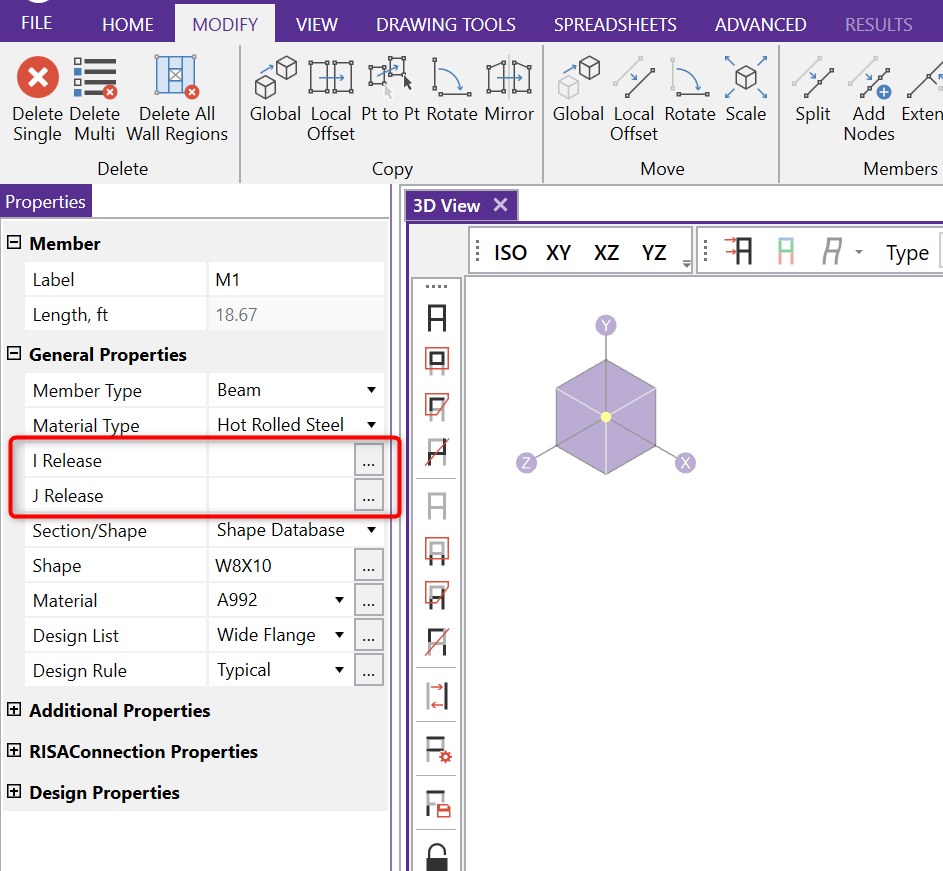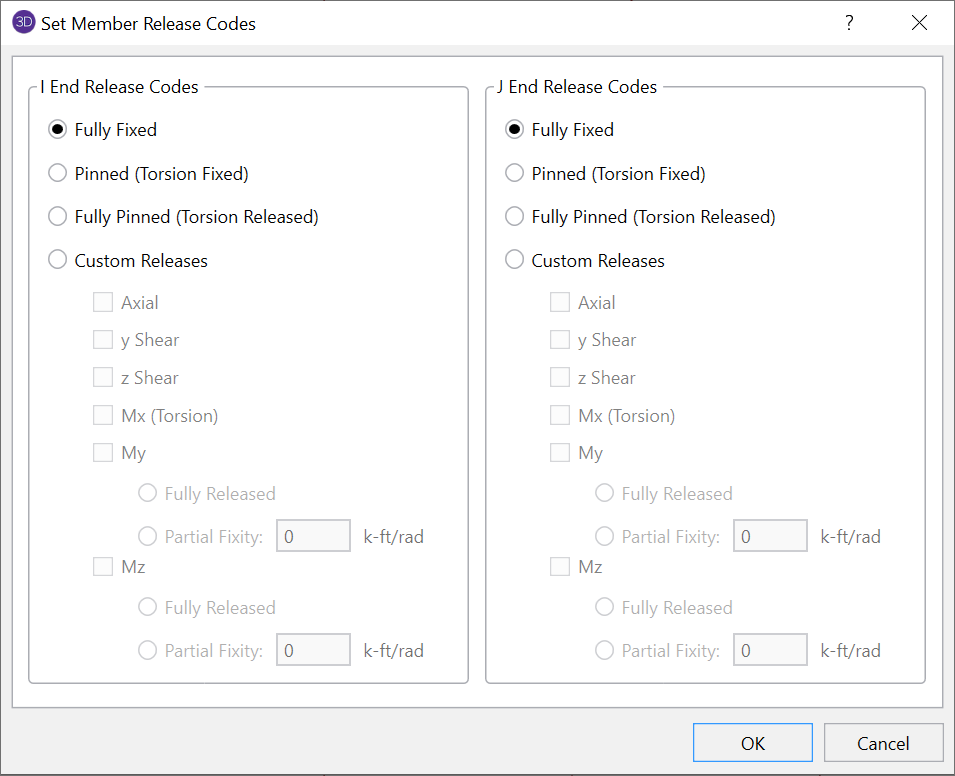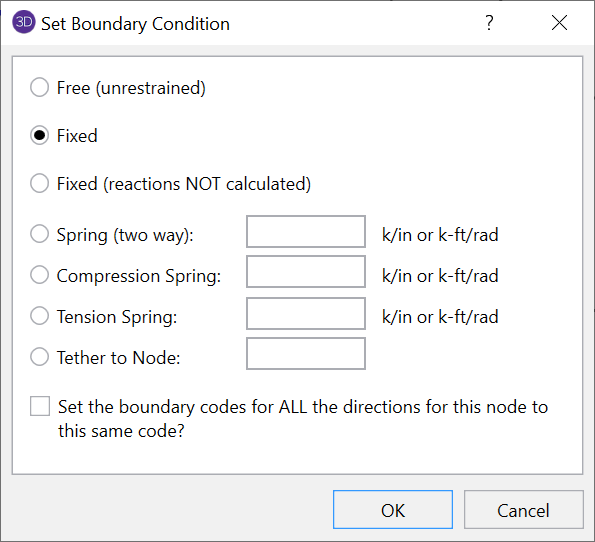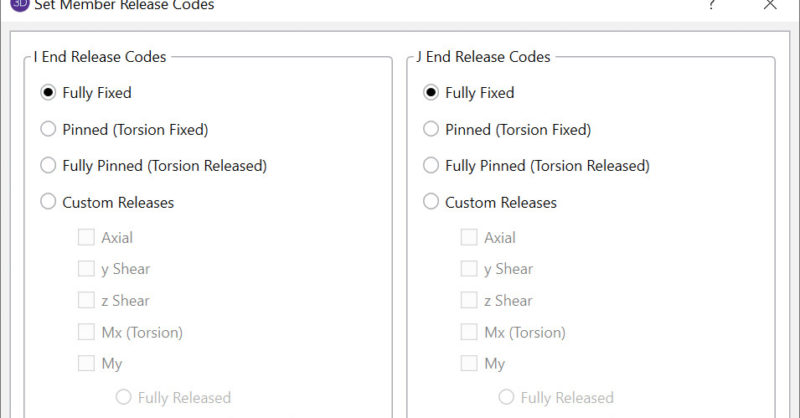Products
Learn
Support
Company
In RISA-3D, there are numerous options for Member End Releases which should not be confused with Boundary Conditions.
End releases are used to define how elements connected to each other. For example, End Releases are used to define whether a beam is carrying moment into a column. You can define the Member End Release when you create the member or you can click on the member and review the I End and J End Release Codes in the Properties Panel by selecting the three dots to the right of the empty fields. Each member has six force components at each end (axial, y-y & z-z shear, torque, and y-y & z-z bending).


Boundary conditions define the EXTERNAL support conditions for your model. For example, a steel frame sits on a foundation and the Boundary Condition defines how the loads get transferred to the foundation.
You define the restraint for X, Y, and Z translations and X, Y and Z rotations with reactions, fixed or springs. (For more information on the difference between Reaction and Fixed boundary conditions, see What is the Difference Between Fixed and Reactions on Boundary Conditions) You can use the quick tools to define a Pinned, Fixed, or Roller boundary condition.

